Despite the tight deadlines, the pressure exerted by Bormann and the fact that the blueprints for the Kehlsteinhaus had taken just weeks to produce, the planning carried out by Professor Roderich Fick and his team of engineers was suitably meticulous. Numerous site inspections would take place during the summer of 1937, with the biggest discussions being focussed on the access to the house: While Bormann wanted the road to go all the way to the doorsteps of the reception house itself, chief state engineer Hans Haupner was in favour of a tunnel and elevator connecting the house with the Parkplatz.
After much debate, Haupner was finally able to persuade the hitherto intransigent Reichsleiter, and the audacious plan for the tunnel and elevator shaft was given the official go ahead. The blueprints sketched out a tunnel with a length of just over 126 metres into the rock face, and a 131 metre high heated elevator shaft connecting the end of the tunnel with the “Teehaus”.
With the plans in place, work would start on the tunnel at the end of September 1937. The state engineers had initially been assigned with the task, but just days after the work had started it was handed over to Professor Fick, who had argued that it was part of the Kehlsteinhaus project. By the turn of the year however progress had started to slow down, and after a series of complaints from the state engineers Bormann had put the project in the hands of Fick’s engineer Dr. Alfred Reinhardt.
In addition to the ongoing administrative issues, the next problem faced by the engineering team was that of transporting the building materials to the summit. This was eventually accomplished using a specially-installed cable system, which spanned a total length of 1270 metres over an elevation of 670 metres. The building of the cable system was in itself a major construction project: fifty men were employed to carry out this onerous task, which involved carrying a substantial amount of heavy equipment including eight heavy support towers up to the 1834 metre high summit along the winding Dalsenwinkel Road.
Dr. Reinhardt found himself having to react quickly to Bormann’s stream of continuous demands, and the sheer size of the project would force all of the construction companies involved to reassess their already tight schedules. More workers were shipped in, and a number of barrack huts were erected in the Obere Kehlalm area at a height of 1630 metres. These barracks housed almost eight hundred men, many of whom were spending months away from home and their families.
As the pressure started to build on the engineers, the work on the summit would become an around the clock operation. With the deadlines getting tighter, Bormann also found himself having to negotiate with the Reich Labour Ministry to extend the working week for the Kehlstein workers from forty-eight hours to sixty.
Changing schedules and crowded tunnels
Work on the elevator shaft would begin soon after that on the tunnel, with the construction moving downwards from the summit. Once again, things were far from easy: the initial blueprints had accommodated for an elevator built to carry ten people, but orders from Bormann to increase the capacity to fifteen meant that the area of the shaft had to be increased to twenty-three square metres – yet another example of crucial changes being made on the fly.
The task was achieved using a combination of traditional manpower and low-impact explosives, and on 4th May 1938 the 131-metre high shaft was complete. The construction was not without its setbacks: on two occasions the tunnel entrance was hit by landslides, with one worker falling to his death during this time.
No sooner had the tunnel and elevator shaft had been completed, work commenced on the various components required to make everything serviceable. The Ravensburg-based Flohr concern were employed to install the elevator – a stunning brass capsule designed by Professor Fick himself – while work also started on the engine rooms, service tunnels and emergency generator. In order to keep the temperature balanced in all weather conditions and to prevent the build-up of condensation, a heating system consisting of two main ventilating fans and a series of eleven air outlets was also be installed in the 131-metre high shaft as well as the main entrance and service tunnels.
Numerous specialist companies were commissioned to carry out these tasks, but once more things would not run completely to plan. The project had appeared to stall with the plans still sitting on Professor Fick’s desk, and it would take almost three months after the initial proposal for work on the heating system to get started.
When things did finally get underway in the autumn of 1938 the main tunnel was transformed into a chaotic hive of activity: while one team of workers were busy building the air outlets, the electricians would at the same time be installing the necessary lighting, fuse boxes and control cables.
The Big Brass Elevator
While work was being completed in the main tunnel, the finishing touches were being made to the elevator and the circular waiting room – clearly the visual showpieces of the subterranean phase of construction. Both the entrance tunnel and the circular elevator waiting room were lined with local high-quality marble: the tunnel was built using Kälberstein marble, while the domed ceiling of the 7m-diameter waiting room was skilfully dressed with mortarless stone from nearby Ruhpolding.
The elevator installed by the Flohr company had an interior of polished solid brass and circular Venetian mirrors, and offered a sneak preview of the luxury awaiting visitors at the summit. Designed by Professor Fick – far better a designer than he was an administrator – the sumptuous elevator cabin was equipped with a classical white-dial clock and black Bakelite emergency telephone, with interior lighting being provided by a circle of eight bright lamps on the ceiling. So that visitors wouldn’t have to stand during the 124-metre ascent to the summit, comfortable leather-covered benches were installed on three sides of the cabin.
There were originally two elevator cabins; while the luxurious brass and mirrored capsule was reserved for Hitler and other VIPs, a more spartan cabin directly underneath was designed to transport both supplies and regular personnel – including Hitler’s guards and house staff – to the summit. While the main cabin opened out into the first floor of the house, the lower cabin provided an exit to the basement level. To ensure complete security, an emergency elevator designed to carry three people – running on a separate engine and accessible from the lower cabin – was also installed.
The lower elevator cabin has not been used since the Kehlsteinhaus was opened to the public, and the leather benches in the main capsule have also since been removed.
The elevator has undergone regular safety inspections, and has functioned perfectly since its being built in 1938 – at no point has the back-up engine or support elevator ever been needed. The original elevator mechanism would continue to be fully functional until 1972, when it would finally be replaced with more modern components supplied by Thyssen/MAN. The elevator itself is today serviced by Otis. ![]()
![]() Did You Know?Although the shaft is 131 metres deep, the vertical distance travelled between the waiting room and the exit at the summit is 124 metres, indicated by the gauge inside the elevator cabin.
Did You Know?Although the shaft is 131 metres deep, the vertical distance travelled between the waiting room and the exit at the summit is 124 metres, indicated by the gauge inside the elevator cabin.
The final touch to the lower portion of the Kehlsteinhaus building work would be the grand portal to the entrance tunnel, a solid arch three and a half metres wide dressed with another local marble from Untersberg. Complemented by two heavy brass doors with stylised handles designed by the sculptor Josef Bernhard Maria Bleeker, the work was completed with the addition of the plaque at the top marking the year of completion.


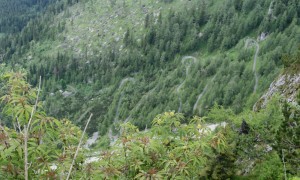
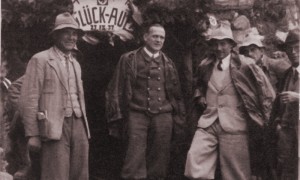
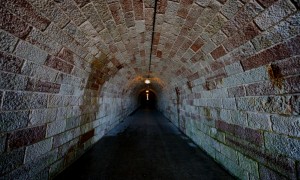
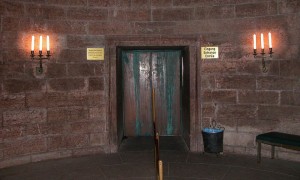
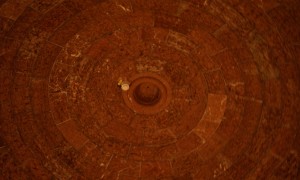
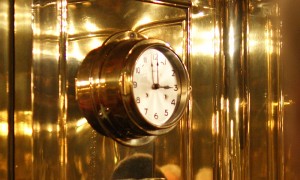
Pingback: Senkrechtstarter Aufzüge in aller Welt: Kehlsteinlift (Berchtesgaden) - Senkrechtstarter
Pingback: The Truth About Visiting Hitler's Eagle's Nest: What You Need to Know Before You Go
Pingback: Berchtesgaden Eagle’s Nest Hike: 11 Reasons to Skip the Bus